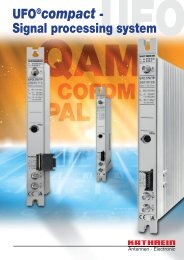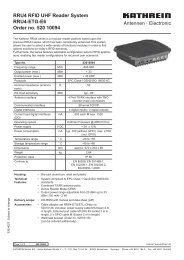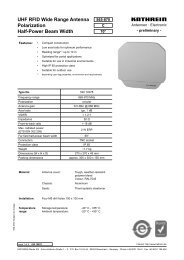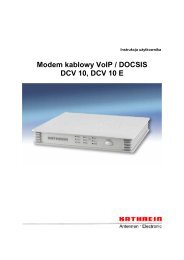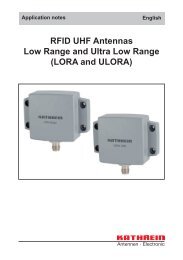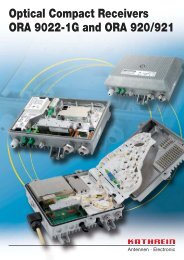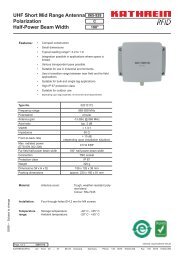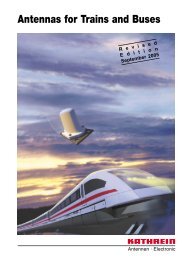Basic Antenna Principles for Mobile Communications
Basic Antenna Principles for Mobile Communications
Basic Antenna Principles for Mobile Communications
You also want an ePaper? Increase the reach of your titles
YUMPU automatically turns print PDFs into web optimized ePapers that Google loves.
4.2.4 <strong>Antenna</strong> Systems<br />
Special applications which cannot be realised by using a single antanna are very often achieved via<br />
antenna combinations. The combination is made up of several single antennas and a distribution<br />
system (power splitter and connecting cable). Very often a combination is designed in order to achieve<br />
a higher gain. Many different antennas are also used to achieve a wide range of horizontal radiation<br />
characteristics by varying the number of antennas, the azimuth direction, the spacing, the phase and<br />
the power ratio. Figure 15 shows 3 simple examples.<br />
A quasi-omnidirectional pattern can also be produced. The required number of antennas increases with<br />
the diameter of the tower. For examples 8 Panels are required at 900MHz <strong>for</strong> a mast with a diameter<br />
of approximately 1.5m. The omnidirectional radiation is not continuous but a result of the one or two<br />
optimas per panel mounting diameter.<br />
The calculation of such radiation patterns is achieved via vector addition of the amplitude and phase of<br />
each antenna. The amplitude of each pattern can be read from the data sheet but the phase is only<br />
known by the antenna manufacturer. However the phase is the most important factor <strong>for</strong> the calculation<br />
because a rough estimate using only the amplitude can lead to completely incorrect results.<br />
– 9 –



